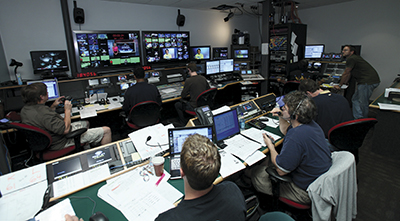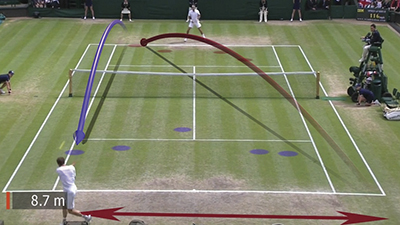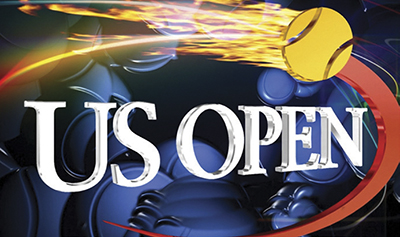Tennis Channel Looks for Love With New Tech

Based in Santa Monica, Calif., The Tennis Channel celebrates its 10th year of covering the sport.
FLUSHING MEDOWS, N.Y. – The fourth and final tennis major Grand Slam at the US Open means two weeks of tennis, even beyond the center court this year as the Tennis Channel looks to live up to its moniker “where champions live.” As the pros head to the borough of Queens in New York City, viewers at home might just have the best seat to enjoy the action.
“What makes tennis so unique is that as the viewer you have two subjects on the screen,” said Bob Whyley, The Tennis Channel’s head of production. “We want to make sure that viewers are provided a great view of every match.”
The Santa Monica, Calif.-based channel has employed a full HD signal since early 2008, and Whyley added that this really is a big part of the presentation. Moreover, to ensure that graphics and other on-screen information don’t impair the action on the court, the standard-definition transmission is also now presented in widescreen.

Viz Libero, which creates virtual enhancements in 3D replays, will make its US Open debut this month. “The 16:9 SD signal also allows the graphics to be moved off to the edge,” Whyley told TV Technology. “This has helped provide a very good experience for the viewer at home.”
HAWK-EYE SUCCESS
Among the two services that The Tennis Channel now employs in capturing every serve, stroke and volley is the Hawk-Eye system, which was originally implemented in 2001 for cricket. This system, which was initially developed for replays, includes several small but high-performance cameras that are positioned around the court, and track the ball from multiple angles.
This is important both for capturing the action for the viewer, but also because it is the only technology now employed in the world for line calling.
Get the TV Tech Newsletter
The professional video industry's #1 source for news, trends and product and tech information. Sign up below.
“This is our seventh year at the US Open,” said Luke Aggas, director of tennis at U.K.-based Hawk-Eye Innovations. “The main reason we’re at this event is for line calling, and the cameras are the fundamental part of this technology.
“This started off just for broadcast as a way to add fun for the viewer at home,” Aggas added. “But it has been refined and the accuracy was improved. It has gotten to the point that it has become what the governing bodies looked at when was questioning a call.”
This technology can now be instrumental at times. “Unlike with football where it can take a minute to determine where the ball landed, decisions can be made very quickly thanks to the Hawk-Eye,” said Whyley.
In addition to helping determine calls, Hawk-Eye works with production teams at each match, and tracks every shot made.
“This can mean a savvy TV way to enhance the experience for the viewer,” Aggas said.
TENNIS VISION
The Tennis Channel also employs Vizrt’s LiberoVision, which creates virtual enhancements in 3D replays, bringing a new perspective to the viewer through analytical tools.
“LiberoVision works by utilizing isolated cameras that allow us to show different angles throughout the court,” Whyley said. “This allows for tracking the trajectory of the ball anywhere in the court. We give it a big resounding yes for what this technology brings to tennis.”
The technology can be used create realistic-looking virtual 3D replays in a 2D environment, and these can create virtual views on the scene.
“This allows seamless combining of multiple angles into one analysis clip by creating ‘flights’ between the respective camera angles,” said Dr. Christoph Niederberger, head of R&D Sports at Vizrt, which acquired LiberoVision in 2010 and has since renamed the technology Viz Libero. “Additionally, advanced virtual graphics such as player and distance tracking, ball impacts, and other enhancements that let you create interesting and captivating editorial stories.”
This could include graphics that demonstrate the distance of a player from the baseline—to indicate a defensive or offensive play—as well as the total distance covered during a play; and as the ball impacts directly on the field this can help the viewers understand the tactics of a player, Niederberger explained.

Moreover this technology “does not require any additional camera feeds other than the ones that a broadcaster has access to,” added Niederberger. “This can be the individual camera feeds in a remote production or the same feed as you receive on your own television set. Based on these video feeds only, it can create eye-catching analysis clips with its advanced image-based algorithms to analyze the video feeds.”
Viz Libero will make its US Open debut this month, but The Tennis Channel introduced the technology at the BNP Paribas Open in Indian Wells, Calif. in March as a test case, and took it to the French Open in May.
SOCIAL EXPERIENCE
While viewers in the stands may bob their heads back and forth to watch the ball and players, those at home may be watching various social media feeds as well.
Touchscreens are The Tennis Channel’s “goto” technology since being introduced last year and are provided by Jacksonville, Fla.-based Information and Display Systems, a division of SMT. In a partnership with IBM, IDS technology is being used to harvest data from the last 30 years. This now includes hundreds of names from players and even tennis reporters to hundreds of hashtags.
“This is all brought into our Duet Hyper X3,” said Whyley. “These go straight to a shell page, and we can be in the middle of a match and get viewers to comment even as it is going on.”
Just as social media continues to be all the more intertwined with sports, so too is it intertwined with the coverage on TV. Players, reporters, coaches and even fans can talk about the matches through social media and this can be feed directly to the screen.
“Athletes are often young and so they love Twitter,” Whyley added. “They love to talk on it after winning a match.”
While tweets may be gaining traction what isn’t taking off right now on The Tennis Channel is 3D video.
“Tennis looks amazing on 3D especially on grass and clay, but I don’t see the traction in 3D right now,” Whyley said. “Once you put on glasses and go into your world it takes away from the experience. So while we have dabbled in 3D in the past we haven’t done 3D this year.”
